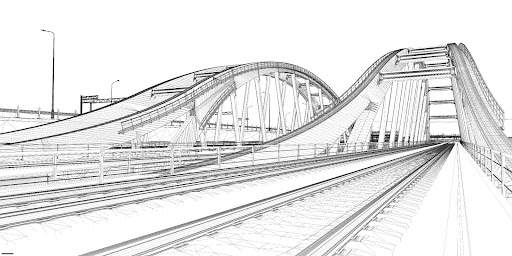
If you haven’t been to engineering school, and maybe even if you have, it can be confusing to tell the difference between civil engineers and structural engineers. After all, you can often find both of these types of engineers at public job sites. So, what’s the difference?
Simply put, a structural engineer is a type of civil engineer who specializes in planning, designing, analyzing, and researching the structural components of public works like bridges, government office buildings, airport facilities, and even football stadiums. Although the majority of a structural engineer’s work is on public projects, you can also find structural engineers working in the private sector. However, the true difference between the two types of engineers is more nuanced than this simple answer provides.
About Civil Engineers
Civil engineers are people who design, plan, construct, maintain and operate infrastructure. This means they work on roads, bridges, airport runways, railroads, dams, and other types of public structures and thoroughfares. In addition to being an active participant in the planning and construction phases of these structures, civil engineers inspect structures and make recommendations as to their repair, upkeep, and eventual demolition. They also get involved with many sure that the necessary heavy equipment is used for the job. This type of engineer can also be found working on waterworks, such as sewer lines, pipelines, and water treatment plants.
Training to be a civil engineer involves earning a bachelor’s degree in civil engineering and passing the state licensure exam in the state where they work. Advancement in management in civil engineering generally requires a graduate degree. According to the US Bureau of Labor Statistics (BLS), civil engineers generally divide their time between working in an office and working in the field at job sites. The majority of civil engineers specialize in one particular area. In addition to structural engineering, these include transportation engineering, geotechnical engineering, and environmental engineering.
About Structural Engineers
Structural engineers are civil engineers who have received additional training and who specialize in the design, planning, construction, and maintenance of “structures”, which can be loosely defined as anything from bridges and office buildings to stadiums and even oil rigs. One of the primary functions of a structural engineer is to determine if the design and materials of a structure are adequate to accommodate the projected weight or “load” of the structure. This includes not only the weight of the building materials but also the weight of the equipment and people anticipated to occupy the structure. Structural engineers also get involved with planning and updating buildings to withstand extreme conditions, such as those found in hurricane-prone areas or along tornado alleys and also earthquake and snow loads.
Structural engineers, in the United States, are generally licensed as civil engineers. However, a few states offer a special license for structural engineers. Like civil engineers, structural engineers require a bachelor’s degree in civil engineering and successful completion of the licensure exam in their individual state. As with civil engineers, advancement in structural engineering into supervisory and management positions generally requires a graduate or even post-graduate degree. Many engineering schools offer graduate degrees in civil engineering with a specialty in structural engineering. A few schools, including the University of California at San Diego, offer an undergraduate degree in structural engineering.
While it can be somewhat confusing for people outside the engineering industry to tell the difference between civil engineers and structural engineers, both have their distinct roles to play in creating and maintaining America’s infrastructure, such as roads, bridges, public buildings, and the like.
[DISPLAY_ACURAX_ICONS]
About Author
 Dustin Johnson is the marketing manager of FortisHD and an enthusiast in construction and heavy equipment. Construction has been an integral part of his life, and he is proud to be able to continue to build his future in such an exciting industry. Throughout his career, he has been fortunate enough to be involved with many engaging projects and is appreciated and valued for his works with the contracting team.
Dustin Johnson is the marketing manager of FortisHD and an enthusiast in construction and heavy equipment. Construction has been an integral part of his life, and he is proud to be able to continue to build his future in such an exciting industry. Throughout his career, he has been fortunate enough to be involved with many engaging projects and is appreciated and valued for his works with the contracting team.












